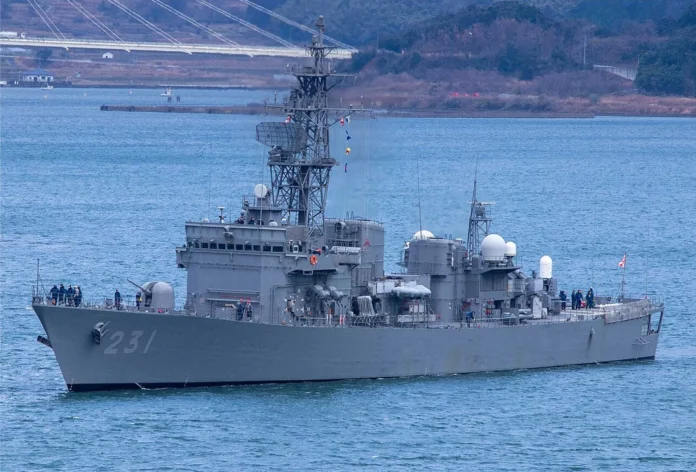
According to information published by Yomiuri on July 6, 2025, Japan’s Defense Minister Gen Nakatani and Philippine Defense Secretary Gilberto Teodoro have confirmed the transfer of six second-hand Abukuma-class destroyer escorts to the Philippine Navy. (From Army Recognition.)
The agreement was formalized during a bilateral defense meeting held in Singapore in early June 2025, in a move that represents a major strategic development in regional security cooperation between the two maritime nations.
The Abukuma-class destroyer escorts, developed in the late Cold War era, have been in service with the Japan Maritime Self-Defense Force (JMSDF) since between 1989 and 1993. Designed primarily for anti-submarine warfare and coastal defense, these vessels represent a highly capable class of ships for mid-range naval operations. Each ship features a full-load displacement of approximately 2,550 tons, a length of 109 meters, and a beam of 13.4 meters. They are powered by a Combined Diesel or Gas (CODOG) propulsion system—two Kawasaki-Rolls-Royce SM1A gas turbines and two Mitsubishi S12U-MTK diesel engines—allowing speeds of up to 27 knots and a crew complement of around 120 personnel.
Armed for multi-role missions, the Abukuma-class ships are equipped with an Otobreda 76 mm naval gun, two triple 324 mm torpedo tubes for anti-submarine warfare, and a Phalanx 20 mm Close-In Weapon System for last-ditch air defense. Some ships in the class are also fitted with RGM-84 Harpoon anti-ship missiles and an ASROC launcher for extended anti-submarine engagement. Their sensor systems include the OPS-14 air-search radar, OPS-28 surface search radar, and OQS-8 sonar, along with electronic warfare suites like the OYQ-7 combat direction system and OLT-3 ECM, reflecting JMSDF’s emphasis on situational awareness and survivability.
These vessels are being phased out of Japanese service due to a combination of fleet modernization and a shortage of naval personnel. Their transfer provides Tokyo with a dual benefit: it relieves logistical burdens while simultaneously reinforcing the maritime capabilities of a close regional partner. For Manila, this acquisition comes at a critical time. According to the 2025 edition of Military Balance by the International Institute for Strategic Studies, the Chinese People’s Liberation Army Navy operates 102 surface combatants including destroyers, while the Philippine Navy commands just two modern frigates. This stark asymmetry has intensified pressure on the Philippines to rapidly enhance its maritime presence, especially in light of increasing Chinese incursions and territorial assertions in the South China Sea.
The deal also reflects an evolving and deepening defense relationship between Japan and the Philippines. During a summit in April 2025, both governments agreed to initiate discussions on an Acquisition and Cross-Servicing Agreement (ACSA). This agreement would facilitate logistical support and sharing of key resources such as fuel, food, and ammunition between the Japanese Self-Defense Forces and the Armed Forces of the Philippines, laying the groundwork for a quasi-alliance framework rooted in mutual strategic interests.
Operational integration of JMSDF-standard platforms into the Philippine Navy will significantly enhance joint interoperability and maritime domain awareness in contested waters. A senior JMSDF official underscored the strategic value of this move, noting that it would boost the ability to “check the movements of the Chinese military” across both the South China Sea and East China Sea. By deploying capable and JMSDF-proven platforms, the Philippine Navy stands to gain not only in terms of fleet size but also in technological depth and readiness for high-end maritime operations.
This transfer of Japanese Navy Abukuma-class destroyers to Philippines signals more than just a hardware transaction; it exemplifies a growing defense synergy between Japan and the Philippines, both of which are confronting shared maritime security threats. The arrival of the Abukuma-class ships in Philippine service will not only close capability gaps but also strengthen the regional architecture of deterrence and cooperation in an increasingly contested Indo-Pacific.



